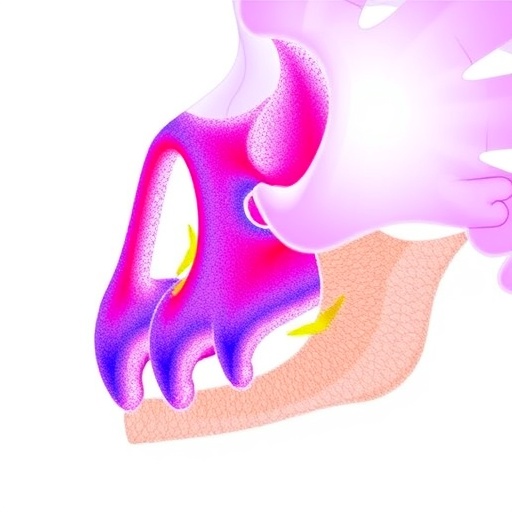In a significant advancement for neonatal care, a recent study has emerged that delves into the intricate relationship between surgical necrotizing enterocolitis (NEC) and subsequent brain injuries in neonates. This condition, which affects the intestines of premature infants, has been a focal point of research due to its severe implications on neonatal health. The cohort studied by Zhang et al. has opened new avenues for understanding not just the risk factors linked with NEC but also the cascading effects that can result in cerebral complications.
The study, conducted by a team at a prominent medical institution, posits that the prevalence of brain injuries in neonates suffering from surgical NEC is alarmingly high. By analyzing a substantial dataset of affected infants, the researchers shed light on various parameters that may influence the likelihood of brain injuries developing. As this area of study is relatively underexplored, the findings carry critical implications for intervention strategies and overall neonatal outcomes.
One intriguing aspect of the research is its emphasis on predictive modeling. Utilizing advanced statistical techniques, the authors have crafted a predictive model that assesses the potential for brain injury in neonates post-surgery for NEC. This model relies on a combination of clinical factors that, when analyzed together, provide a clearer picture of the risks involved. By identifying these parameters, clinicians can make more informed decisions regarding patient care and monitoring.
Among the various risk factors identified, low birth weight and gestational age stand out prominently. These elements have been correlated with higher incidences of both NEC and subsequent brain complications. The study meticulously discusses how the maturation of organ systems plays a pivotal role in determining the vulnerability of neonates after surgical interventions. Thus, understanding these factors not only benefits medical professionals but also advances the field of pediatrics as a whole.
The study’s methodology is rigorously detailed, showcasing how it approaches data collection and analysis. By performing a retrospective review of clinical records, Zhang et al. have ensured that their findings are rooted in actual patient experiences, adding a layer of authenticity to the data interpretations. Such a methodological approach is essential as it enhances the reliability of the conclusions drawn regarding surgical NEC and brain injuries.
Moreover, the implications of this research extend beyond the immediate context of NEC. The insights gained may resonate across various fields of pediatric medicine, ultimately leading to broader applications in understanding and mitigating the effects of different surgical interventions on neonatal health. This cross-disciplinary relevance is a hallmark of impactful research, emphasizing the interconnectedness of medical specialties.
Critically, the predictive model proposed by the researchers is not merely an academic exercise; it has real-world applications. Clinicians can utilize this model to stratify risk among neonates diagnosed with NEC, allowing for targeted interventions that could minimize the incidence of brain injuries. Furthermore, the continued use and refinement of such predictive models could foster a culture of proactive healthcare, where anticipation of complications leads to early intervention and better outcomes.
To enhance the model’s efficacy, ongoing validation through prospective studies will be necessary. The researchers recommend further investigations that may incorporate genetic factors or additional biochemical markers as part of the predictive framework. Such advancements may lead to a comprehensive understanding of the multifaceted nature of NEC and its related complications.
In closing, the research conducted by Zhang et al. represents a vital contribution to the field of neonatal medicine. It compels practitioners to rethink the potential consequences of NEC and underscores the necessity of integrating predictive analytics into clinical practice. The hope is that with these new insights, medical professionals can better safeguard the health of fragile newborns, ensuring that they not only survive but thrive in the face of adversity.
The findings are anticipated to spark discussions at medical conferences and within academic circles as researchers and clinicians alike look to leverage this knowledge in practical settings. This study serves as a call to action for greater awareness and research into the complexities of neonatal care associated with surgical NEC, ultimately influencing practices that can significantly change the trajectory of at-risk infants’ lives.
As the discourse surrounding neonatal care continues to evolve, the work of Zhang et al. stands as a pivotal moment. It embodies the spirit of inquiry that drives medical science forward—driven by compassion for the vulnerable and an unyielding quest for improvement in healthcare practices.
Ultimately, this research may not just inform treatment protocols but inspire a new generation of pediatricians to consider the long-term effects of surgical interventions on the developing brains of neonates. The dignity and quality of life for these infants hinge on such advancements, establishing a more hopeful future for practitioners, patients, and their families.
In summary, this extensive investigation offers profound insights into the correlation between surgical NEC and brain injuries in neonates, laying the groundwork for enriched medical practices that prioritize predictive analytics and individualized care.
Subject of Research: Surgical necrotizing enterocolitis and its impact on brain injury risk in neonates.
Article Title: Analysis of risk factors and establishment of a predictive model for brain injury in neonates with surgical necrotizing enterocolitis: a retrospective study.
Article References:
Zhang, X., Wei, H., Tan, Q. et al. Analysis of risk factors and establishment of a predictive model for brain injury in neonates with surgical necrotizing enterocolitis: a retrospective study.
BMC Pediatr 25, 948 (2025). https://doi.org/10.1186/s12887-025-06324-x
Image Credits: AI Generated
DOI: https://doi.org/10.1186/s12887-025-06324-x
Keywords: surgical necrotizing enterocolitis, brain injury, neonates, predictive model, risk factors, neonatal care, retrospective study.
Tags: advanced statistical techniques in researchcerebral complications from NECcohort study on NEC and brain injuryintervention strategies for NECNEC complications in premature infantsneonatal brain injury predictionneonatal health implicationsneonatal outcomes after surgerypredictive modeling in neonatal carerisk factors for neonatal brain injuriessurgical necrotizing enterocolitisunderstanding NEC and brain injury links





